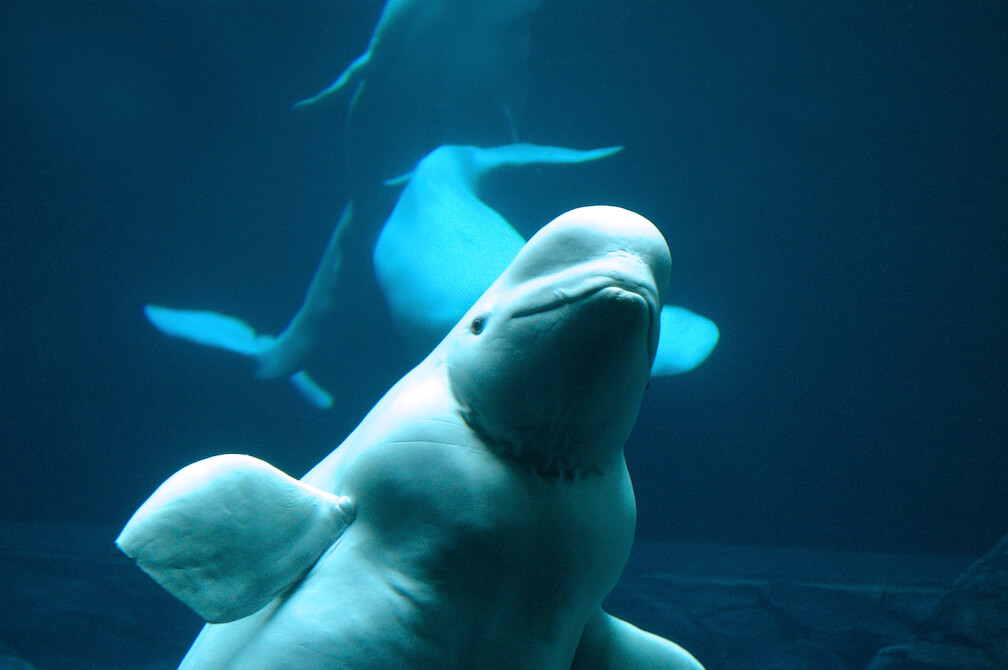The lives of diving animals take place for the most part under water, out of human sight. Can we, by observing the behaviour of a group of belugas at the water surface, guess what is happening below the surface? Researchers studying belugas in the St. Lawrence Estuary have attempted to answer this question and have recently published their findings in the journal NRC Research Press.
Understanding and classifying the behaviours of diving animals is complicated by the fact that they only show a small fraction of their behavioural repertoire on the water surface. The advent of new tags that can be temporarily attached to an animal – such as those recording the depth and orientation of dives or even filming animals on their underwater forays – has advanced our understanding of underwater behaviour. However, few studies combine observations made on the surface with those made under water. Researchers from McGill University, the Maurice Lamontagne Institute (Fisheries and Oceans Canada) and the Group for Research and Education on Marine Mammals (GREMM) have decided to combine this complementary information to better understand and classify the behaviours of St. Lawrence belugas.
“Data collected using tags are generally more precise, but they are also more difficult and costly to obtain and can track only one individual at a time, unlike monitoring an entire herd at the surface,” explains Sébastien Lemieux Lefebvre, PhD candidate at McGill University and lead author of the study.
Researchers studied summer beluga behaviour on the water surface aboard a small research boat, as well as in the water, using time/depth/speed recorders temporarily attached to the animals using suction cups. They combined the data collected from 1,413 focal herd follows and 27 time/depth/speed recorder deployments.
A few impressive facts: certain belugas reached the maximum depth of the St. Lawrence Estuary, i.e. 335 m, and the longest recorded dive (without breathing) was 19.2 minutes!
Researchers observed that erratic surface water movements are often associated with dives that are relatively shallow but near the seabed. “Belugas usually perform this type of dive in the shallower parts of the river, potentially for benthic foraging or during periods of rest, socializing, and caring for young,” explains Sébastien Lemieux Lefebvre. “Herds with females and their calves are more likely to adopt these behaviours, possibly to facilitate access to shallow prey, minimize the time calves spend alone at the surface when females are feeding, or promote socializing among calves,” he adds.
Directional surface movements are more frequently associated with long, deep dives that rarely reach the seabed. These dives are likely to be used during pelagic foraging, exploration, and long-distance travel.
“Although we have developed a fairly good map of the beluga’s summer distribution, our limited knowledge of habitat use, specifically what belugas do there and what resources they use, are still limited. Sébastien’s study is an important step in this direction,” says Robert Michaud, GREMM scientific director and co-author of the study.





